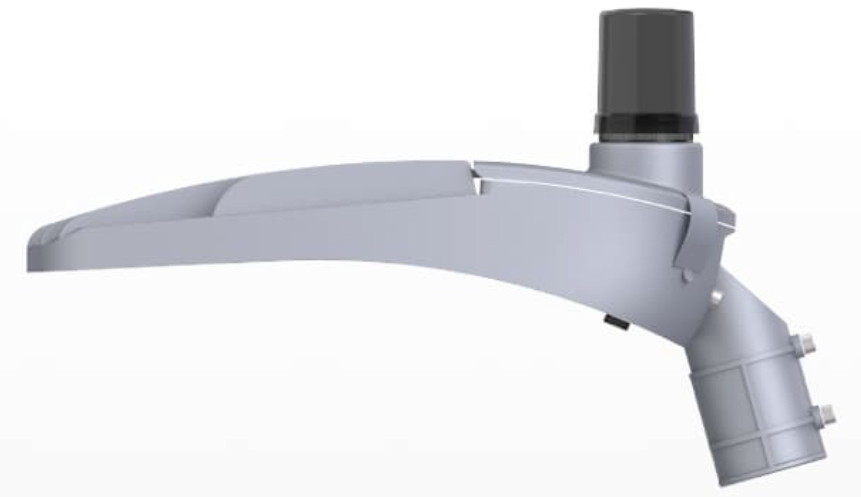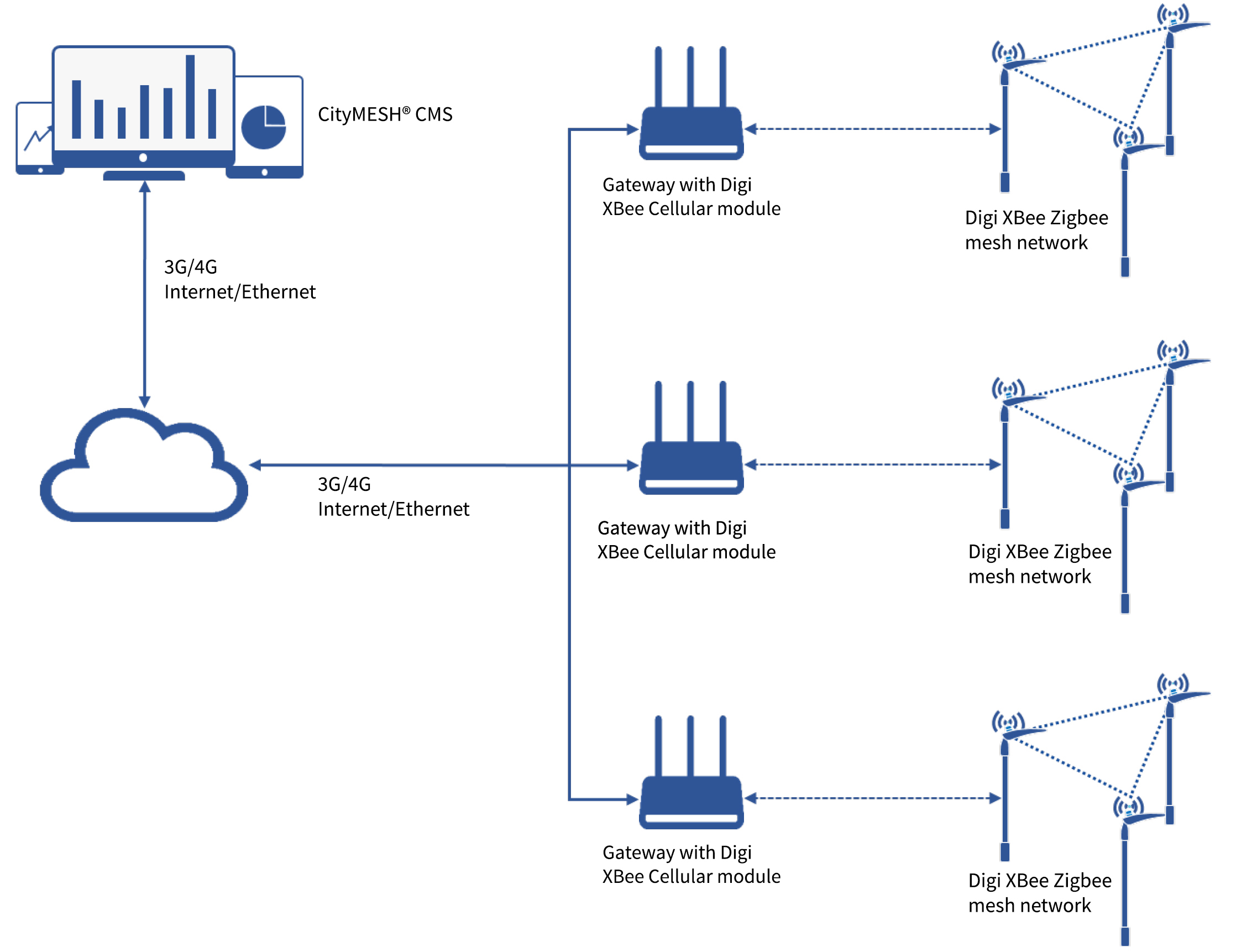

In Chile, a country that imports fossil fuels and relies heavily on hydroelectric dams, energy conservation matters. Sicom Electronics is helping municipalities respond with CityMesh®, a scalable smart cities network to intelligently control thousands of streetlights and traffic lights with greater precision. The result: lower costs, a better eco-footprint, and greater citizen safety. Digi XBee® RF modules provide the wireless connectivity to make it happen.
A New Vision for Smart Cities in Chile
In a country where energy efficiency is a high priority, cities continually strive to find new ways to reduce energy consumption and use tax dollars wisely. Initially, those efforts focused on traffic infrastructures, where lights and controls can have a significant and favorable impact.
According to Carlos Bay-Schmith, production manager of Sicom Electronics, there were immediate advantages in replacing halogen lamps in traffic lights. “In the early 2000s, LEDs were emerging here, and it was a straightforward improvement to swap out the halogen and use colored LEDs,” he said. “But we knew there were many opportunities to enhance traffic flow, increase safety, and save energy.

Sicom developed a controller for traffic lights, offering cities a turnkey solar-powered system that was remotely managed through wireless communications. “Each pole is autonomous,” he said. “The LEDs consume very little power, so they can be powered by a solar panel. And we synchronize them to optimize traffic flow, so motorists use less fuel. And we manage all of these poles from a single location thanks to Digi XBee.”
The Digi XBee Zigbee low power module w/ U.FL connector provides easy, low-cost connectivity between traffic lights and the cloud. The Digi XBee Zigbee RF module is ideal for smart cities applications that require low latency and predictable communication timing. Providing quick, robust mesh configurations, Digi XBee products enable robust end-point connectivity with ease.
The updated Digi XBee Zigbee module offers improved power consumption, support for over-the-air firmware updates, as well as MicroPython programmability and Bluetooth® Low Energy.
“We installed many of these autonomous traffic lights, and they are highly reliable,” said Bay-Schmith. “In fact, after the 2010 earthquake, one of our municipal customers suffered heavy damage from a tsunami. Our client told us that the entire city was dark – except for the traffic lights on the street corners.”
Shedding New Light on Smart Cities

Soon, the engineers at Sicom were ready to tackle an even greater challenge: streetlights. “LED technology continued to progress,” Bay-Schmith explained, “and soon we were able to use white LEDs to illuminate streets. That’s when we created the CityMesh streetlight system. These LEDs are easy to dim and control and can provide 210 lumens/watt – nearly double what high-pressure sodium and halide could provide. The initial price is lower, the operating cost is 50% less, and they provide excellent illumination. We use Digi XBee modules to connect them in an energy-efficient, connected mesh network around the city.”
Today, CityMesh is deployed in seven Chilean cities, controlling thousands of street lights. “When you get to large mesh networks with thousands of streetlights, you can run into some technical limitations,” he said. “We found that the Digi XBee module was the most configurable and had really good firmware that let us reconfigure things at a very low level. UART and AT commands may work for 10-20 points, but we needed to control 7,000 lights. If you’re not routing things at a very low level, the commands just won’t reach the nodes. With other alternatives we looked at, they couldn’t command street lights quickly or you’d have to send the commands three or four times before the light would receive it. We used high-powered modules as gateways controlling 200-250 lights and designed a mesh in a tree structure. That’s why the low-level control we had with Digi XBee was so important.”
Creating Smart Cities with Smarter Streetlights
Each CityMesh controller is connected to an antenna and housed in a plastic box attached to a streetlight, and each unit has its own unique MAC address. Sicom engineers can then create a dynamic map of each installation location and remotely provision and monitor each streetlight from a central location.
“Installing them is very easy,” Bay-Schmith said. “Each unit just feeds off the streetlight’s 220 V power cable. We can remotely configure and operate each streetlight independently, set the on/off parameters, and use a photo cell for automatic dimming. For example, we might want 100% lighting until 2 a.m. and then dim it to 80% until morning. Or we might shut off certain lights during a fireworks display.”

Bay-Schmith notes that the operational cost savings can be particularly compelling with CityMesh. Municipalities have reported that as they switched to LEDs and migrated from flat billing to metered billing, they saw as much as 50-80% reduction in energy costs.
Remote management also simplifies maintenance because cities can avoid many expensive truck rolls. “They don’t have to send out teams to inspect lights, looking for failures,” Bay-Schmith said. “They can see it all on a centralized console. If a light goes offline, they know it immediately. Ultimately, the CityMesh smart cities application reduces a city’s environmental footprint, cuts costs, and improves citizen safety. That’s a compelling value proposition that our customers find attractive.”